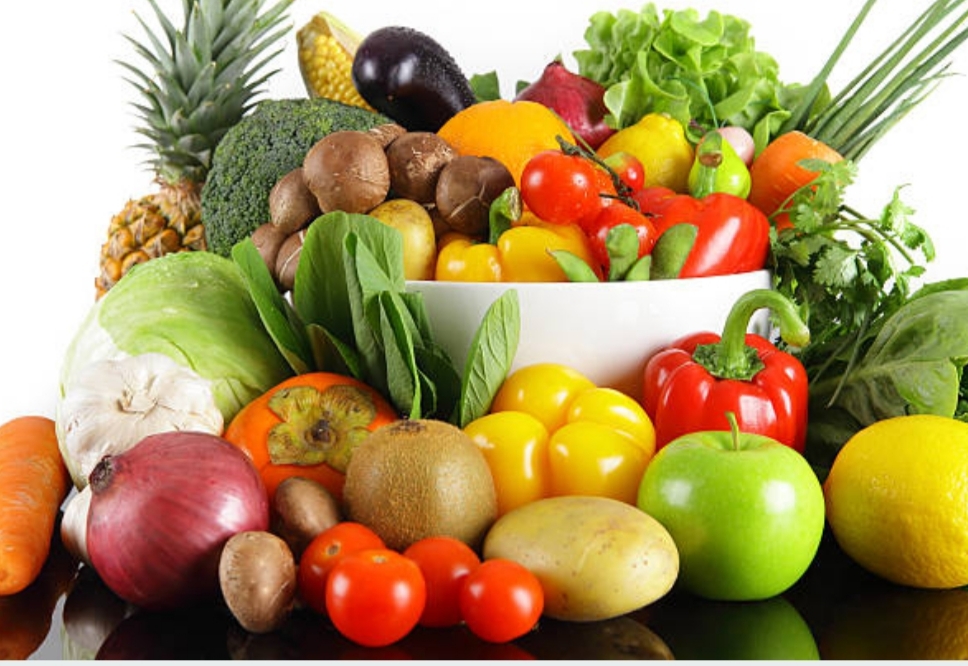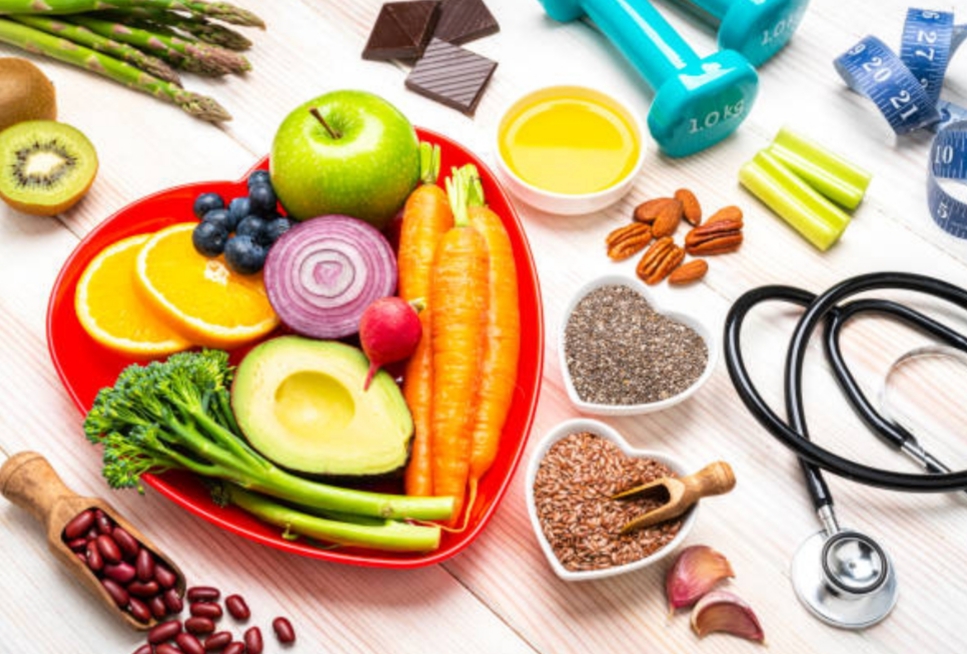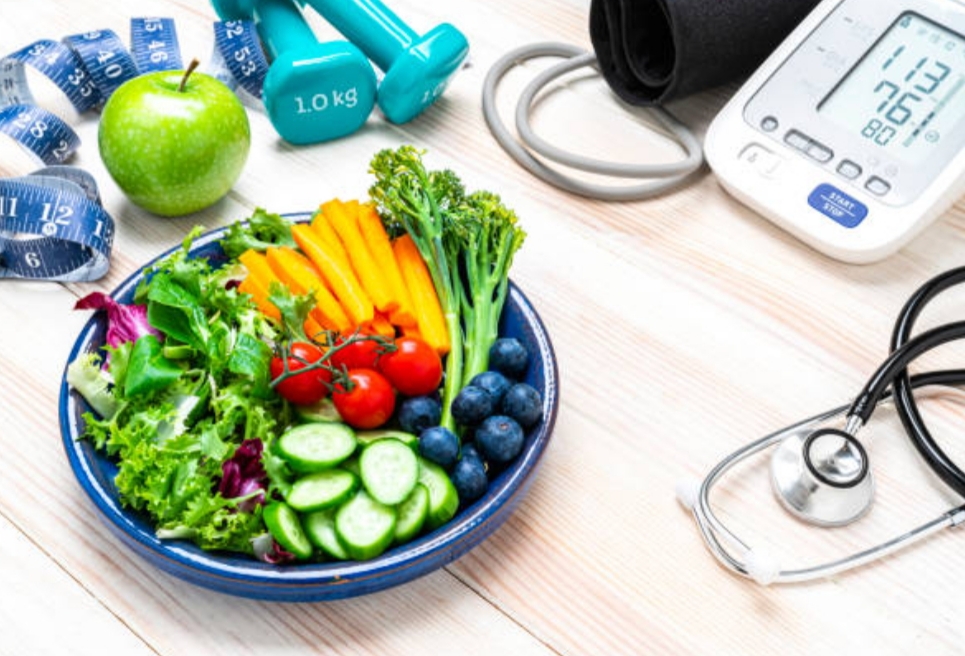Hypertension or high blood pressure has been on the rise in the US for the past 50 years. DASH stands for Dietary Approaches to Stop Hypertension. First introduced in 1997, it is a diet promoted by the National Institute of Health’s National Heart, Lung, and Blood Institute (NHLBI) for reducing blood pressure. Various organizations have ranked it as one of the “Best Overall Diets.” The DASH diet is a well-balanced, lifelong approach to healthy eating that was discovered in research funded by the National Institutes of Health (NIH) to determine the role of dietary eating patterns on blood pressure.

MANAGEMENT OF HYPERTENSION :
Initial management of hypertension uses a two-pronged approach, with emphasis on Pharmacotherapy and Non-pharmacotherapy. Non – pharmacological therapy (Lifestyle modifications) has an important role in both non-hypertensive & hypertensive individuals. Lifestyle modifications have the potential to prevent hypertension as well as to reduce BP and lower the risk of BP-related complications.
The following non-pharmacotherapeutic interventions:
NUTRITION :
The following Dietary changes are of paramount importance: Reduction of salt intake to an average of not more than 5 g per day (WHO, 2012), moderate fat intake, following the DASH diet plan (Dietary approaches to stop hypertension), the avoidance of a high alcohol intake, and restriction of energy intake appropriate to body needs.
What is the DASH Diet?
The DASH diet, or Dietary Approaches to Stop Hypertension, was developed through research funded by the National Heart, Lung, and Blood Institute. It is effective in lowering blood pressure and blood lipid levels, which ultimately reduces the risk for cardiovascular disease.
This diet plan emphasizes fruits, vegetables, whole grains, lean protein, low-fat dairy, and seeds, nuts, and legumes. It also recommends limiting sugary beverages, sweets, sodium, and red meats. The DASH diet is rich in magnesium, potassium, and calcium, which are protective against high blood pressure. DASH diet is rich in fruits, vegetables, and fat-free or low-fat dairy foods, whole grains, fish, poultry, beans, seeds, and nuts. It also contains less salt and sodium, sweets, added sugars, and sugar-containing beverages, fats, and red meats. This diet helps to lower blood pressure and also has suitable effects on blood lipids.

Origin of DASH Diet
The DASH diet originated out of clinical studies by the National Institute of Health. These studies were designed to test which diets are best suited to reducing hypertension. The National Institute of Health examined three different diets in the clinical studies and then examined their results. The DASH diet is not necessarily a “diet” rather it is a way of eating that will promote long-term health. The USDA (U.S. Department of Agriculture) recommends the DASH diet as “an ideal eating plan for all Americans.”

The characteristics of the DASH diet:
Lower sodium intake
The DASH diet provides guidelines for your sodium and caloric intake. The standard DASH diet allows up to a maximum of 2300 mg of sodium per day and the low-sodium version of the DASH diet allows up to 1500 mg of sodium per day. The average American diet contains up to 3500 mg of sodium per day.
Increased vitamins and minerals
All your essential vitamins and minerals are provided on the DASH diet by the many fruits, vegetables, whole grains, and other whole foods that you are encouraged to eat on the diet. The diet also includes an ample supply of minerals like magnesium and potassium that help to lower or improve your blood pressure.
Increased good fats
Consuming a lot of good fats and minimizing bad fats is highly encouraged on the DASH diet. Saturated and Trans fats should be replaced with lean meats, omega-3’s from fish and seafood, low-fat dairy, nuts, and seeds. Good fats help to optimize our overall health by lowering bad cholesterol and increasing good cholesterol.
Increased fiber consumption
The DASH diet recommends increasing your fiber consumption by eating several servings of fruits, vegetables, and grains every day. This keeps you feeling full and helps to reduce blood pressure. High fiber consumption also helps to maintain good blood sugar levels and it also encourages weight loss.
Reduction of alcohol and caffeine
The DASH diet suggests limiting your intake of alcohol, soda, tea, and coffee because they offer no nutritional value, typically contain a lot of sugar and they can elevate blood pressure. This is an important lifestyle modification for reducing blood pressure. Alcohol raises blood pressure and also can harm vital organs like the liver, brain, and heart. For persons who consume alcohol, the recommendations are, that men should have no more than two alcoholic drinks per day and women no more than one drink per day as supported by the AHA 2006 scientific statement of hypertension management.
Customized sodium and caloric intake
In the same way that you can choose a 2300 mg/day or 1500 mg/day sodium intake DASH diet, you can also choose the most suitable caloric intake level for you
Photo by fcafotodigital from Pexel
Benefits of the DASH Diet
The DASH eating plan is effective for the prevention and management of hypertension. Hypertension is a clinical term for high blood pressure. Approximately 1 in 3 American adults have hypertension. This “silent killer,” which often lacks overt symptoms, can increase the risk for heart disease, stroke, kidney disease, and blindness.
Hypertension, a chronic disease, is treated with prescription medications. However, diet and lifestyle changes can significantly reduce blood pressure. Research shows that in some individuals, the DASH eating plan may reduce blood pressure as much or more than prescribed drugs. The DASH eating plan, in combination with a sodium-restricted diet (1500mg/day), can produce even greater results in lowering blood pressure.
The DASH diet is supportive of digestive health and decreases the risk of the development of colorectal cancer. This may be due to an increased level of fiber or higher consumption of dairy.
The DASH eating pattern support kidney health. Studies have shown that a DASH diet decreases the risk for urinary albumin excretion and protects against rapid decreases in glomerular filtration, both of which are indicators of decreasing kidney function. It is also protective against the development of kidney stones.

Researches on DASH DIET
Over the years several studies have proven that the DASH diet is not only effective for lowering blood pressure through diet but it is also effective in reducing the risk of cardiovascular disease, several types of cancers, stroke, heart disease, kidney stones, kidney disease, diabetes, heart failure, and many other diseases. The DASH diet has also been shown to promote weight loss and improve overall health.
Research has found that diet affects the development of high blood pressure, or hypertension (the medical term). Recently, two studies showed that following a particular eating plan—called the DASH diet—and reducing the amount of sodium consumed lowers blood pressure. While each step alone lowers blood pressure, the combination of the eating plan and a reduced sodium intake gives the biggest benefit and may help to prevent the development of high blood pressure.
The DASH diet research findings, which tells about high blood pressure, and how to follow the DASH diet and reduce the number of sodium consumptions. The menus and recipes are for two levels of daily sodium consumption —2,400 milligrams (the upper limit of current recommendations by the Federal Government’s National High Blood. Pressure Education Program, or NHBPEP, and the amount used to figure food labels’ Nutrition Facts Daily Value) and 1,500 milligrams.
NUTRITIONAL RECOMMENDATION FOR DASH DIET
Dietary Approaches to Stop Hypertension (DASH) is an eating plan that originally lowers blood pressure but also is “heart-healthy” and lowers the risk of heart attack and stroke. This eating plan is for 1,800 calories per day. The DASH plan is high in fruits and vegetables, whole grains, low-fat dairy, and protein that are low in saturated fat and cholesterol. The plan also focuses on lowering salt intake to less than 2,300 milligrams (mg) per day. Even lower salt intake (1,500 mg per day) can lower blood pressure even more. Eating nutritious foods will help to control blood pressure. The DASH diet emphasizes fruits and vegetables, low-fat milk products, and whole grains. It is a Mediterranean diet full of nutrients that are good for your heart and good for your health.
DASH Diet means eating a variety of foods and food groups that research has shown can be beneficial to heart health while avoiding others, that are harmful.
Key components include the following:
- Fruits and vegetables
- Whole grains
- Nuts, seeds, and legumes
- Lean protein—fish and poultry are emphasized, while red and processed meat consumption is limited
- Low-fat or fat-free dairy
- Avoidance of sugar-sweetened beverages
- Low sodium—when kept under 2,300 mg daily the diet is even more helpful with blood pressure, which can drop even lower with less than 1,500 mg daily sodium intake
- Higher levels of dietary nutrients like potassium, magnesium, calcium, and fiber
- Lower levels of saturated fats, trans fats, and cholesterol
- Increased the fiber intake slowly, so that people can avoid becoming gassy or bloated.
- Keep food allergies and intolerances (e.g., lactose intolerance) in mind as you tailor this diet to individual needs.
- For example, most DASH diet guides don’t cover avocados. Some foods are may not be the best choice for their category. For example, pretzels are grains but don’t have a lot of fiber or nutrients.
DOES THE DASH DIET WORK?
The DASH diet has shown several benefits. It lowers blood pressure (systolic and diastolic) for people with hypertension, and also for people who have blood pressures in the normal range, whether or not they lower their sodium intake. Reductions in pressures occur within one week and keep dropping if sodium restriction is ongoing.

The DASH diet reduces the risk of sudden cardiac death on the order of approximately a 13% decrease in 10-year Framingham CVD risk. It is helpful with weight loss, it lowers hsCRP levels relative to usual diets (comparably to other healthy diets), and it also offers therapeutic benefit for a wide range of other clinical conditions, including the following:
- Abnormal lipids
- Cerebrovascular disease
- Heart failure
- Colon and rectal cancer chemoprevention
- Insulin resistance and diabetes
- Urolithiasis (kidney stones)
- Gout
- Kidney disease
OTHER LIFESTYLE CHANGES

WEIGHT REDUCTION:
The prevention and correction of overweight/obesity is a prudent way of reducing the risk of hypertension and indirectly coronary heart disease. The greater the weight loss, the greater the reduction in blood pressure. Meal patterns that rely heavily on processed foods containing more fats, sugar, and sodium, lead to steady weight gain and high BP.
QUIT SMOKING :
Smoking is a major risk factor leading to HTN and heart disease. Nicotine and Carbon monoxide present in smoke damages heart & blood vessels. Smoking also increases blood viscosity, clot formation and speeds up the process of hardening of the arteries. In patients with coronary heart disease, smoking cessation is associated with a 36% reduction in the risk of all-cause mortality.
PHYSICAL ACTIVITY :
The role of physical activity in the treatment of hypertension is well known. Regular physical activity enhances the sense of well-being, improves functional health status, & reduces the risk of cardiovascular disease and mortality.
EXERCISE:
Researches showed that exercise incorporated lifestyle intervention can result in significantly better BP control among patients taking Pharmacotherapy for Hypertension. 30-45 minutes of moderate level activity on most days of the week can lose/maintain weight & helps to lower Blood pressure.
YOGA/ MEDITATION :
Yoga is a beneficial multifunctional therapeutic modality in the treatment of a variety of psychological and medical conditions such as depression, anxiety, post-traumatic stress disorder, hypertension, cardiovascular diseases, and COPD. Meditation helps to calm the body and soul and relaxation techniques such as massaging relieve stress. It might be that a reduction in stress and stimulation of the body might impart physiological benefits, says the American Heart Association.
CONCLUSION :
In conclusion, Hypertension is a major risk factor and a powerful predictor of cardiovascular morbidity and mortality. The main thrust of primary prevention of hypertension includes a sustained effort on lifestyle modifications. Established nutrition recommendations are proven to help reduce blood pressure in general populations. Thus, decrease the load of chronic diseases such as cardiovascular, cerebrovascular, and renal which are associated with hypertension. It encourages you to take a diet rich in potassium, calcium, and magnesium and reduce your intake of sodium in your diet.
DASH diet is rich in vegetables, whole grains, fruits, fish, meat, poultry, nuts, beans, and low-fat dairy products. The diet helps you to reduce your systolic blood pressure by 8 mmHg and diastolic blood pressure by 3 mmHg, which could make a lot of difference in reducing morbidity and mortality in hypertensive patients. DASH diet also prevents osteoporosis, cancer, heart disease, stroke, and diabetes as it has a high quotient of antioxidant-rich food.





